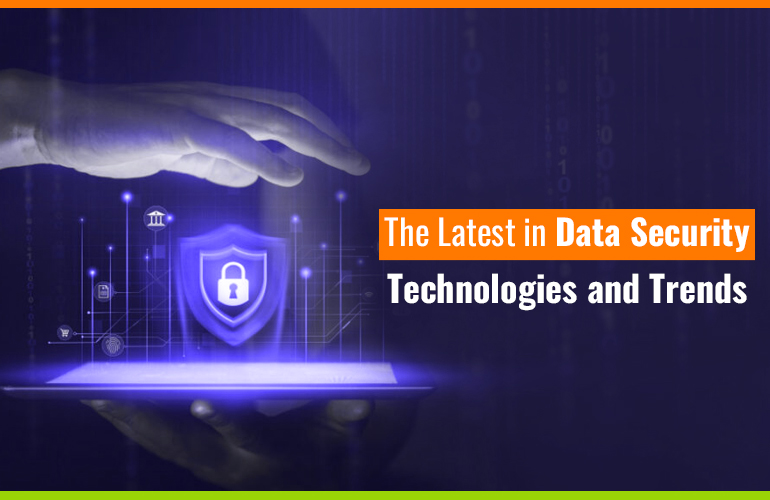In today’s rapidly evolving digital landscape, data security is of paramount importance. With the increasing sophistication of cyber threats, staying ahead of potential risks is crucial for businesses of all sizes. This guest post will explore security technologies for data and trends instrumental in safeguarding sensitive information. We will delve into various security aspects, from encryption and authentication to emerging trends like zero-trust architecture. By the end of this post, you’ll have a comprehensive understanding of how to fortify your data and its security measures.
Introduction
Data security is a non-negotiable aspect of business operations in the digital age. With cybercriminals becoming more advanced and persistent, the consequences of a data breach can be catastrophic. This article provides insights into critical security technologies and emerging trends to help organizations protect their assets and customer data.
Data Encryption: Protecting Information at its Core
Data encryption is the cornerstone of security about data. This technology ensures that data remains confidential and unreadable to unauthorized individuals. Encryption converts plain text data into a coded format that can only be deciphered with the appropriate decryption key. It’s like putting data into a secure vault with the key held by authorized personnel.
Multi-Factor Authentication: Adding Extra Layers of Security
Multi-factor authentication (MFA) is an effective defence against unauthorized access. In addition to a username and password, MFA requires at least one more verification form, such as a fingerprint scan, a smart card, or a one-time code sent to a user’s mobile device. This multi-layered approach ensures the account remains secure even if login credentials are compromised.
Firewalls and Intrusion Detection Systems: Establishing Digital Perimeters
Firewalls and intrusion detection systems (IDS) act as digital barriers. Firewalls monitor and filter network traffic, allowing or blocking data packets based on security rules. IDS, on the other hand, identifies potentially malicious activity within a network. By combining these technologies, organizations can establish digital solid perimeters.
Zero-Trust Security Model: Trust No One, Verify Everything
Zero-trust security is an emerging trend in data security. It operates under the principle of “never trust, always verify.” In a zero-trust environment, access is restricted to the minimum necessary, and every user and device is continuously authenticated and authorized. This model assumes that threats may exist both outside and inside the network.
Biometric Security: A Futuristic Approach
Biometric security, which uses unique biological features like fingerprints, facial recognition, or retinal scans, is a cutting-edge data security technology. It provides a high level of security since biometric data is complicated to fake or replicate. As the technology matures, it’s becoming more accessible for businesses.
Blockchain Technology: Securing Data with Transparency
Blockchain is not just for cryptocurrencies. Its inherent structure of decentralization, transparency, and immutability makes it an appealing technology for data security. It can be used for secure record-keeping, supply chain validation, and identity verification, reducing the risk of data tampering.
Machine Learning and AI: Predicting and Preventing Threats
Machine learning and artificial intelligence play a pivotal role in security. They can analyze vast datasets to identify patterns and anomalies, helping organizations predict and prevent cyber threats. These technologies continuously evolve to stay ahead of new attack methods.
Cloud Security: Protecting Data in a Virtual World
The migration to cloud-based systems has introduced a new set of security challenges. Cloud security technologies protect data stored in the cloud, often through encryption, access controls, and monitoring. Understanding the specific security measures of cloud service providers is essential for a robust cloud security strategy.
Mobile Device Management: Securing the Mobile Workforce
Mobile device management (MDM) solutions have become crucial with the increasing prevalence of remote work. MDM technologies enable organizations to control and secure mobile devices that access their network. This helps in preventing data breaches through mobile endpoints.
Emerging Threats and Trends
The world of security is in a constant state of flux. Threat actors adapt to new technologies, and innovative security solutions emerge to counteract these threats. To stay ahead of the curve, organizations should keep a close eye on emerging trends such as quantum computing threats, deepfakes, and the evolution of ransomware.
Conclusion: A Holistic Approach to Data Security
In a world where data is a valuable asset, protecting that data is critical. Data security technologies and trends evolve to meet the challenges of an ever-shifting threat landscape. Organizations can fortify their defenses and protect what matters most by implementing a holistic security strategy incorporating encryption, multi-factor authentication, zero-trust principles, biometrics, blockchain, and cutting-edge technologies like AI.

